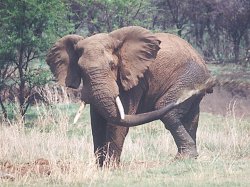
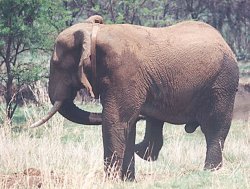
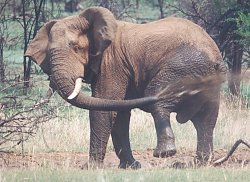
I arrived at Pilansberg nature reserve at 12 on Monday, for what I considered a well-deserved break. Should have been in the Cape visiting friends and family, but my car decided it wanted a new radiator, and it is not a good idea to drive 1600Km with a leaky radiator. After I got that fixed, there was not enough time left for the Cape. Needed somewhere a bit closer.
So. Two nights in the Pilansberg it was then. The Pilansberg is a fascinating place. It is a very old volcanic crater, by now eroded down to a circle of hills. Sun City and the Lost Palace are situated as an enclave to one side.
But enough of all that. I checked in, and drove straight to the hide at the main dam. At that hour few animals would be about, so no use driving around looking for them.
Getting to the hide I set up my camera with the 1000mm reflex lens I got some time earlier. I had not yet tested it under the conditions I got it for: game. But of course I forgot my ASA400 film I got just for it, and was stuck with ASA100. Not really fast enough for a f11 lens. But it made do.
After a while of sitting there, looking over the dam, eating a rather meagre lunch I packed for myself, an elephant appeared at the side of the water. It started to splash itself quite merrily. Some people in the hide with me from Botswana called it "Itchy Bum". It clearly was missing its tail, and quite a lot too, since it splashed its rear as much as it could! Here are some of the photos of my trip, hope you enjoy them.
In the first three the water itself is not that clear. Click any photo for an enlargement.

|

|

|
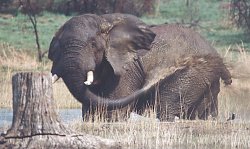
|
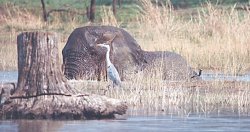
|
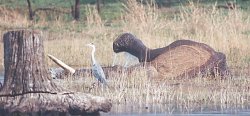
|
It is early summer now, so a lot of young animals are about. Stepping out of the hide, on the way to the car, I saw these darter chicks being fed by a parent. Sorry for the bit of fuzziness in the photos. I did include one close-up of an adult darter, taken from the hide.
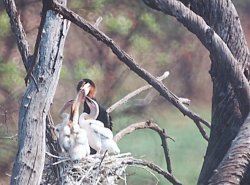
|
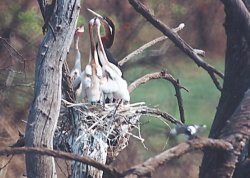
|
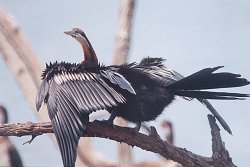
|
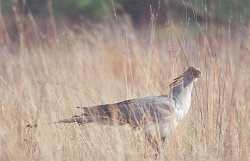
|
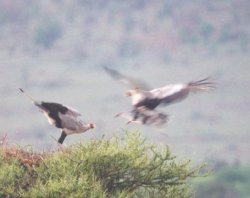
|
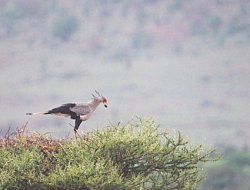
|
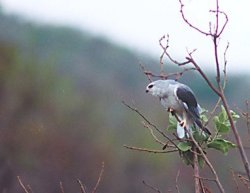
|
Later the day I saw two black-shouldered kites fighting for quite some time. I managed a quick photo of one while it was resting. |
|
Watching elephant feed can be quite interesting. This individual was walking around, eating some grass. The method they use is to pluck the grass by folding it's trunk on itself around some grass until it has enough, lift the grass in the U-shaped bend of the trunk, then pick it out of the bend with the tip of the trunk and put it in its mouth. All done with a Zen-like state of calmness about it the whole time! Notice the little blue flowers all around. At some places the veldt was covered with them, especially were the grass was burned down. |
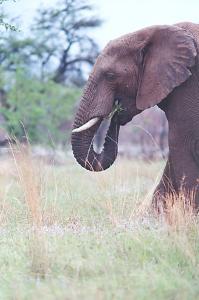
|
|
Up: Homepage |
Comments, problems or suggestions? Please mail me at webmaster@haarhoff.net